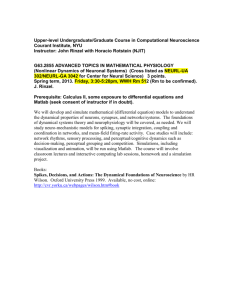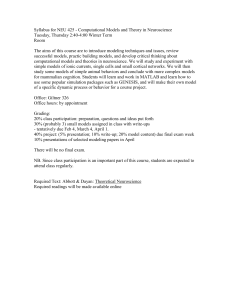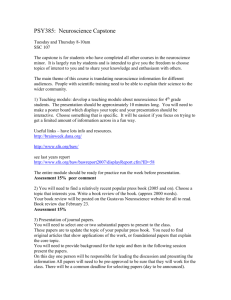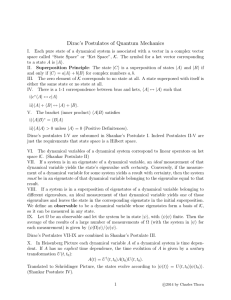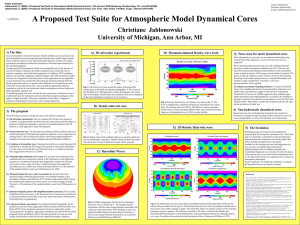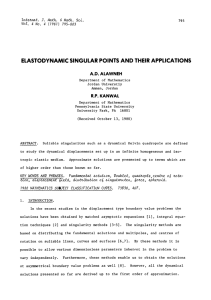Fall 2012 Math 8515 Dynamical Foundation of Neuroscience
advertisement
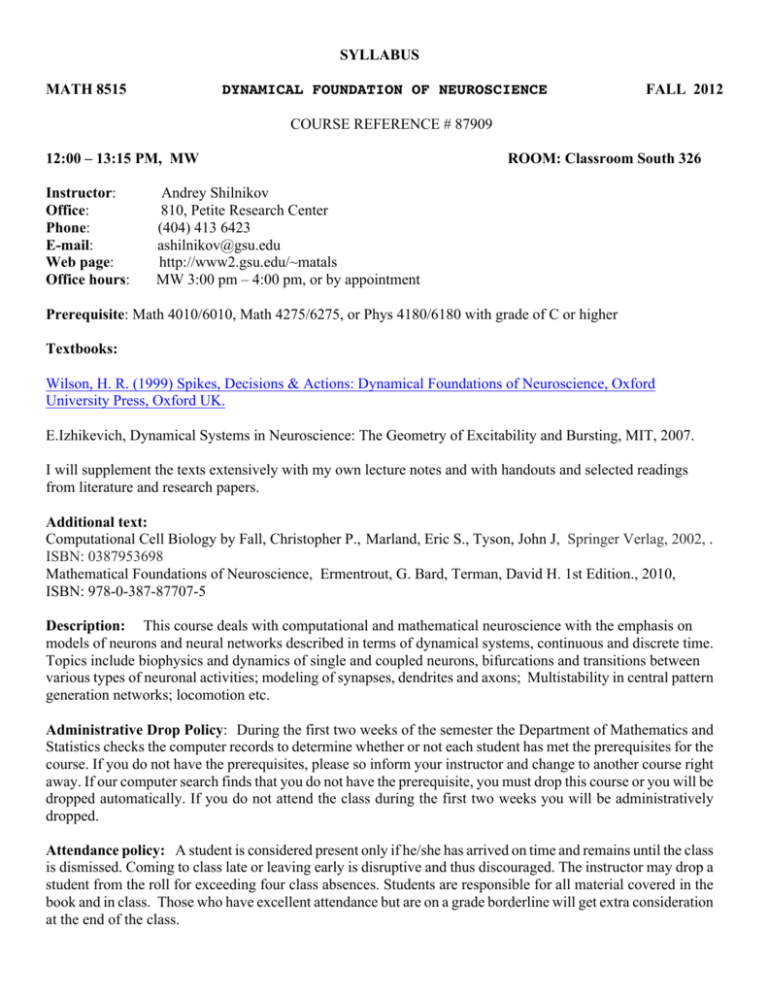
SYLLABUS MATH 8515 DYNAMICAL FOUNDATION OF NEUROSCIENCE FALL 2012 COURSE REFERENCE # 87909 12:00 – 13:15 PM, MW Instructor: Office: Phone: E-mail: Web page: Office hours: ROOM: Classroom South 326 Andrey Shilnikov 810, Petite Research Center (404) 413 6423 ashilnikov@gsu.edu http://www2.gsu.edu/~matals MW 3:00 pm – 4:00 pm, or by appointment Prerequisite: Math 4010/6010, Math 4275/6275, or Phys 4180/6180 with grade of C or higher Textbooks: Wilson, H. R. (1999) Spikes, Decisions & Actions: Dynamical Foundations of Neuroscience, Oxford University Press, Oxford UK. E.Izhikevich, Dynamical Systems in Neuroscience: The Geometry of Excitability and Bursting, MIT, 2007. I will supplement the texts extensively with my own lecture notes and with handouts and selected readings from literature and research papers. Additional text: Computational Cell Biology by Fall, Christopher P., Marland, Eric S., Tyson, John J, Springer Verlag, 2002, . ISBN: 0387953698 Mathematical Foundations of Neuroscience, Ermentrout, G. Bard, Terman, David H. 1st Edition., 2010, ISBN: 978-0-387-87707-5 Description: This course deals with computational and mathematical neuroscience with the emphasis on models of neurons and neural networks described in terms of dynamical systems, continuous and discrete time. Topics include biophysics and dynamics of single and coupled neurons, bifurcations and transitions between various types of neuronal activities; modeling of synapses, dendrites and axons; Multistability in central pattern generation networks; locomotion etc. Administrative Drop Policy: During the first two weeks of the semester the Department of Mathematics and Statistics checks the computer records to determine whether or not each student has met the prerequisites for the course. If you do not have the prerequisites, please so inform your instructor and change to another course right away. If our computer search finds that you do not have the prerequisite, you must drop this course or you will be dropped automatically. If you do not attend the class during the first two weeks you will be administratively dropped. Attendance policy: A student is considered present only if he/she has arrived on time and remains until the class is dismissed. Coming to class late or leaving early is disruptive and thus discouraged. The instructor may drop a student from the roll for exceeding four class absences. Students are responsible for all material covered in the book and in class. Those who have excellent attendance but are on a grade borderline will get extra consideration at the end of the class. Grading: Grades will be determined on the basis of several home-taken research projects. The final grade will be awarded as follows. 97%-100% of the maximum = A+ 90%-96% = A 87%-89% = B+ 80%-86% = B 77%-79% = C+ 70%-76% = C 60%-69% = D 0%-59% = F Withdrawal: October 9, 2011 is the last day to withdraw and receive a possible grade of W except for hardship withdrawal. A grade of W will only be assigned to a withdrawing student, if the student is passing at the time of withdrawal. Procedures: Class meets twice a week. Taking good notes during the class is of significant importance. Homework will be assigned in each class. After the class, read the book, read your notes and do as many of the homework problems as you can prior to the next class. Try to get the remaining problems explained in the next class. You are responsible for all material covered in class, whether or not you attended this class. Academic Dishonesty: Plagiarism and cheating are serious offenses and may be punished by failure on the exam. Repeated cheating will result in a grade F for the course. Homework: Working on the homework assignments is an essential part of the course. It is critical for your success on the exams. This course syllabus provides a general plan for the course; deviations may be necessary.
